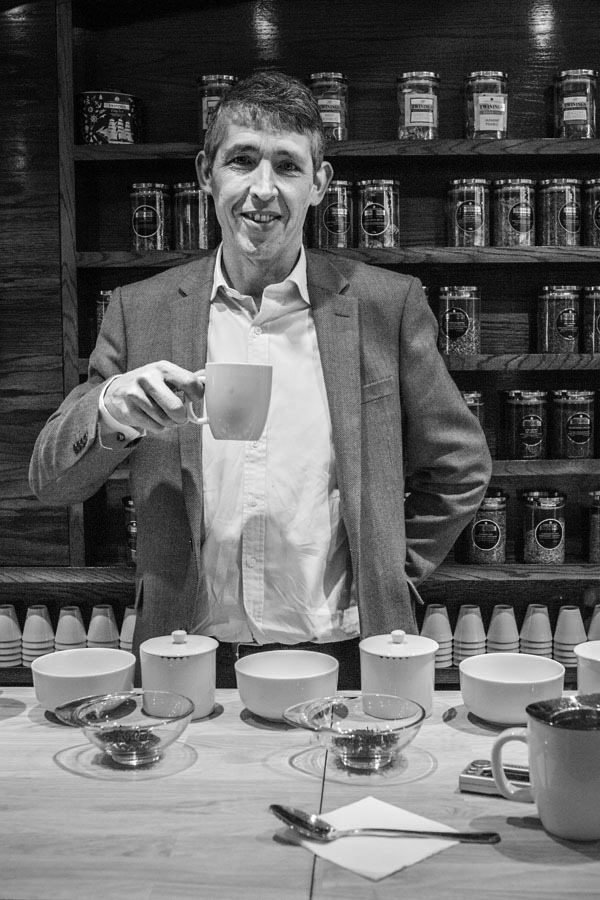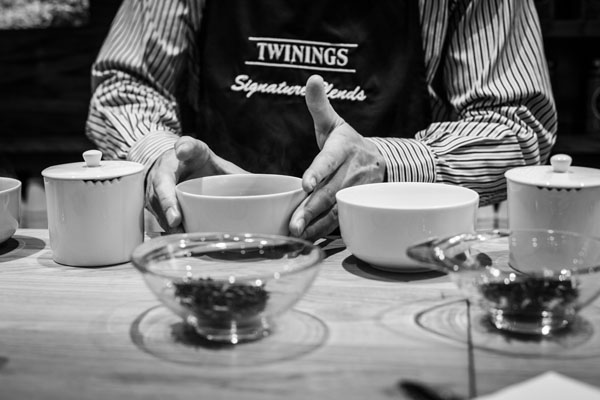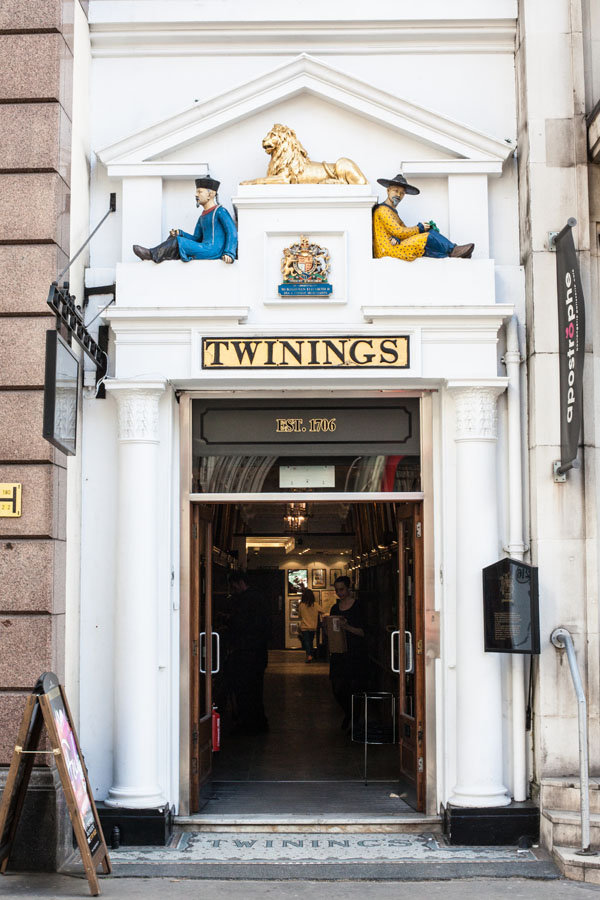 |
| Mr Stephen Twining |
On a Tuesday morning which felt like midday after a visit to London’s fish market, Stephen Twining made me my first cup of tea of the day.
The name of the tea maker really gives away the reason why I made a note of that first cup of tea in my diary. Stephen Twining is the tenth generation of the Twining tea family, a legacy that was started 308 years ago and helped shape this nation of tea drinkers.
Stepping back those 308 years in time, there were over 2000 coffee houses in London. To stand out in this saturated market, one had to do things slightly different. Thomas Twining opened up shop in a London that was going through vast changes after the Great Fire of 1660 destroyed most of the city. Looking at the shop which is still holding strong at The Strand, it looks like the building is squeezed in but it was actually one of the first to be there. The shop used to stand at a corner which made it easy for high class ladies – who weren’t allowed into the coffee shops as they were considered masculine territory – to drive their carriages to the side and send their footmen in to buy the tea that had the reputation of being the finest of them all. Because of this increasing amount of interest in buying his teas, Thomas realised that he was actually more a blender of tea and started to market his business as such. Sadly there were no copyrights in the 17th century and so his blends, and those he created especially for lords and ladies, were being copied by others. Today there is only one personal blend left, which is the closely guarded secret of the Queens tea.
The Twining Family played an important part in Britain becoming a tea drinking – devouring – nation when Richard Twining, grandson of Thomas, and head of the tea trade, persuaded Prime Minister William Pitt to lower the then high levels of duty. He argued that, revenues would be greater if taxation would be lower. Tea at that moment in history was a privilege only available to the most well-to-do of society and so important that it was high on the political agenda. The Communication Act of 1784 lowered tea taxes and made it affordable to all those who wanted it in their cup. This made tea finally a part of everyday life.
Nothing would be the same after that and tea became the most consumed beverage in Britain and still remains so to this day. Twinings received the Royal Warrant for tea from the young Queen Victoria in 1837, the Victorian era was an important time in the changing rituals of tea drinking. Tea caddies were being produced, one finer than the other and the key would be in the hands of the lady of the house, marking her status.
 |
When visiting Twinings and having a pleasant conversation with Stephen Twining over that cup of tea he made me, he showed me his collection of antique tea caddies. I am looking for one myself and he showed me how to spot the read deal in tea caddies. After my cup is finished there is more tea drinking as I am there to learn about tea and how to taste it properly. Philippa is one of the 12 Master Blenders of Twinings with 19 years of service and counting. She explains that tea varies so much that to create for example an English breakfast, it can contain up to 40 different types of tea to create the flavour that is needed. Twinings have built big relationships with their growers and have been working with the same ones for years. Being a family business, which they clearly still are, they value the people they work with.
 |
| Slurping away, the sound of the Master Blender |
The Master Blenders go through about 400 to 600 cups of tea a day and each box of tea is checked. To become a Master Blender it takes five years of training after which you will receive your own tasting spoon engraved with your name. To taste tea like they do, they use their spoon to slurp the tea. Philippa clearly has had her training as when I try to mimic her ‘slurp’ I really can’t do it as vigurously as she does.
Tom Frances, the flavour expert, works closely with Philippa and the other Master Blenders and looks at trends that might be useful in creating new teas. They explain that some teas are only available for two or three weeks as tea is very seasonal. All black teas start their lives as green teas as the leaves are oxidised by leaving them out to dry.
 |
| Tom, flavour expert |
What is the difference really?
Green tea is unoxidised, to stop is from going black it is being warmed to kill the enzymes that react to the air and make it into black tea. The leaves are then rolled and often steamed.
Black tea is oxidised by leaving them to dry with air pumped into the room so the enzymes can turn the tea black
White tea is the least processed tea, picked in the morning when the dew has just evaporated. On a fine day the leaves are left outside for a few hours to dry and then the leaves are rolled if needed as usually this isn’t required.
First tea to taste is a 2013 ‘first flush’ Darjeerling. This is tea made from the first picking after winter and the plant has been dormant. The taste will never be the same again as it all depends on the year, and weather. The end of the Darjeerling season is marked with the arrival of the Monsoon.
Because Darjeerling is so precious, and therefore expensive, it is often diluted by other tea manufacturers to keep cost down. Twinings only uses pure Darjeerling in its blends.
The second tea today is Ceylon Silver Tips, made from the unopened leaf buts. The buts have a light fur which gives the tea notes of peach and hay. On to the Osmanthus Green, hand rolled with osmanthus flowers the tea is floral and aromatic. The showstopper of the day must be the Yin Shan Tien Hua, a tea which is basically a chrysanthemum flower blossoming open in the water. It doesn’t only look the part, it is also very enjoyable.
The last teas of the day are the new trends, sweet teas which have natural flavours. They aren’t my cup of tea but they do taste alright compared to other sweet teas I’ve tasted before.
I leave the shop with the knowledge that this iconic British company, however large, is still a family business, not only for the Twining family but also the people who are also a part of it, the Master Blenders, the flavour experts and the people on the shop floor. I like the fact that so much thought goes into the teas and that they value their relationships with the growers. The fact that they have so much respect for their heritage makes them a firm favourite of mine.
Update: As the question was asked in the comment section on where to buy Twinings Tea if you can’t visit The Strand shop in London: Have a look on the shop online here >
 |
| The original shop on The Strand, London. |
You might also enjoy
British Watercress
A British Pig farm
Falcon enamelware
Don’t forget to leave a comment!






